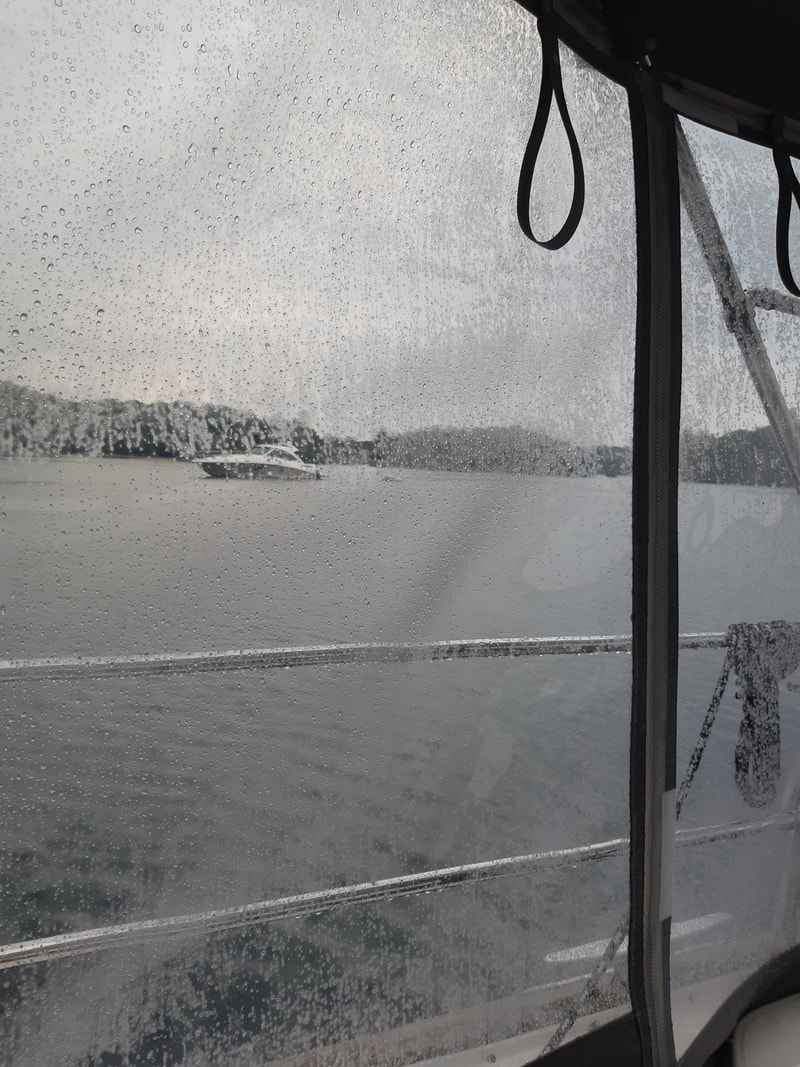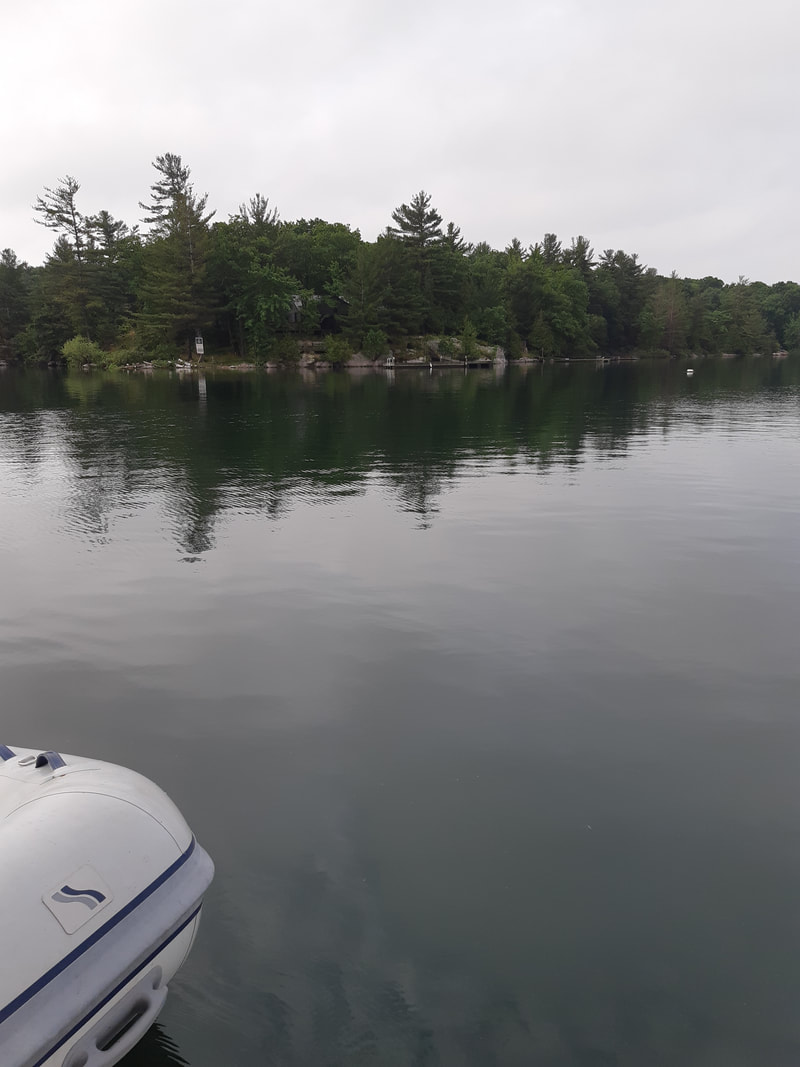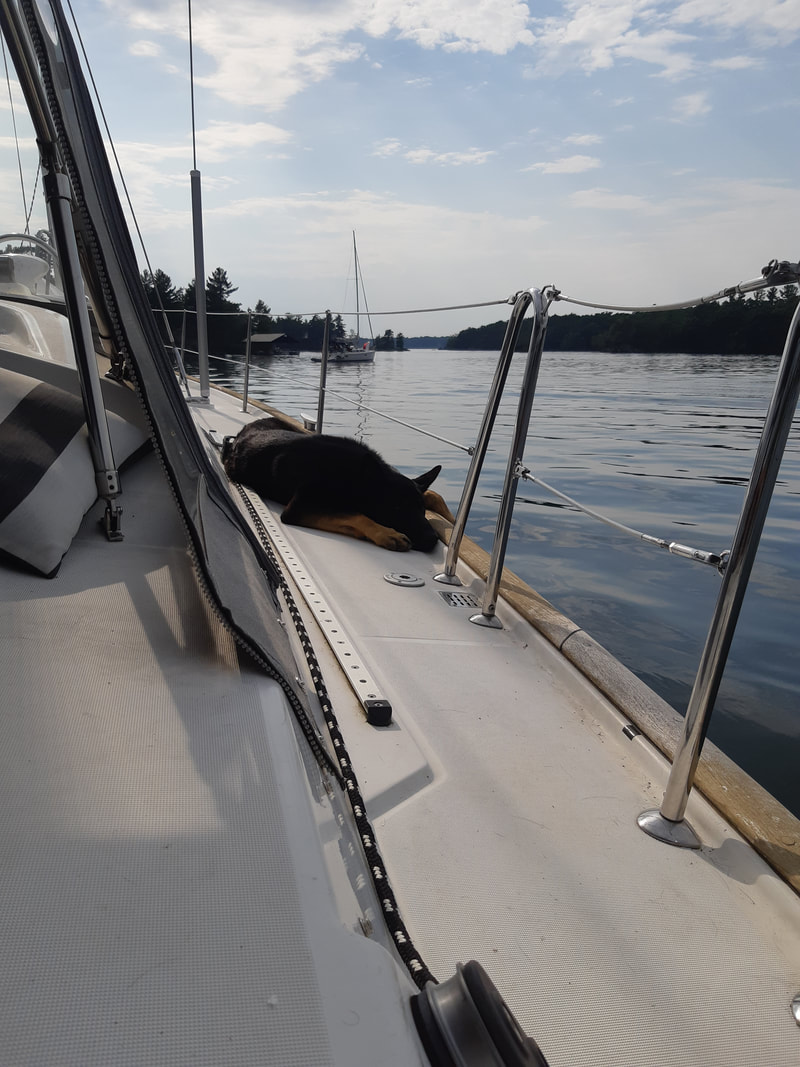|
We have been at anchor for just under a week and we are already feeling back at home. For us, it is a comfortable and soothing sensation to be on a boat, swinging at anchor. Wild Horses is heavy (about 25,000 lbs) so she doesn’t noticeably wobble and tip as you move about her, like our smaller/lighter boats used to do. Floating at anchor on Wild Horses is more like being lightly rocked. We have never slept better!
Of course, being at anchor isn’t all easy-going, relax-in-the-cockpit-with-a-mojito moments. There is the occasional boating-related drama when, for example, another boat gets dangerously close to us while dropping or weighing anchor but, mostly, our drama is brought to us by good old mother nature. We were reminded of her strength a few times this past week when thunderstorms raged through our quiet anchorage. When these storms pass through, it is our only focus. The first, and strongest, was on July 2. As sailors, we check the weather often (hourly, at least) so that there are no surprises should the weather turn south. Early preparation for these events help protect your boat, your gear and your crew. Your anchorage may be a safe haven in calm winds but, through a storm, you may be backed up against your lee shore and praying your anchor holds. So, when Environment Canada issued a Thunderstorm Watch alert for the afternoon, our ears perked up. It is an interesting thing, thunderstorm watches and warnings. What is the difference? A “thunderstorm watch” is issued when a thunderstorm could happen whereas a “thunderstorm warning” is issued when a thunderstorm should happen. A gentleman from Environment Canada explained it to us this way: Think about baking a cake. You have to assemble all the ingredients, then you mix them together and throw that mixture into the oven. A “thunderstorm watch” is basically having all the ingredients assembled together. You don’t have a cake, but you have a lot of stuff that could make a cake. With a “thunderstorm warning” your ingredients have been mixed together and that cake is in the oven! The only question is whether it hits you or not. The thunderstorm, that is, not the cake 😊. Thunderstorms are dangerous on a boat for a few reasons. Obviously, they may bring cloud-to-land lightening, but they also often bring very strong winds and rain. When a thunderstorm watch is issued (or whenever the sky is looking a little ominous), we clear our decks of anything that isn’t tied down and close all the hatches. Experience has taught us that you prep for the storm when a “watch’ is issued because you may not have much lead time once it is a “warning”. We double check that the dinghy, usually tied to the stern, is tightly secured and empty. The cockpit either gets cleared of stuff (cushions, towels, books) or we put up our full enclosure, which protects the whole of the cockpit from rain and wind. Finally, the boat key is put in its ignition, ready to start the boat should things turn particularly nasty, which happened to be the case with this particular storm. The “watch” became a “warning”. The sky turned dark and thunder growled in the background. The first few droplets of rain hit our decks. Then the sky opened up and the wind increased from a calm 5 knots to what we guess was 60 knots (Sorry! In the drama, I forgot to eye the wind indicator to get a true reading). The force against the boat was immense – rain slammed our decks, white-capped waves slapped heavily against the hull and the boat felt as though it was hanging to its spot by a thread (truly, it is a tad more than a thread…we have an oversized 40 kg Rocna anchor and had deployed 100 feet of chain). Eyeing our lee shore, we started the engine and turned on our navigation lights as did all the boats in the anchorage. Confidence in your ground tackle (i.e. anchor, chain and rode) can only take you so far. Having the engine running is the best safety measure should an anchor fail. You would have only seconds before you smashed into shore, a dangerous proposition for the crew and for the boat. Our anchor held firmly and the first few signs of lightness in the sky allowed us to exhale. A few minutes after that, it was all over. The boat engine was turned off and we went about checking for damage and leaks. There were neither. The whole storm lasted only 30 minutes or so and, afterwards, the anchorage was returned to tranquility, as though we had imagined everything. Weather is weird. For the record, our pup Ocean slept through the whole storm. She is the heartiest of sailors! Comments are closed.
|
AuthorVictoria is a hiker, dog-lover, blog writer and planner extraordinaire. Oh, yeah and she is kind of fond of living on a boat. Categories
All
Archives
June 2024
|



 RSS Feed
RSS Feed
